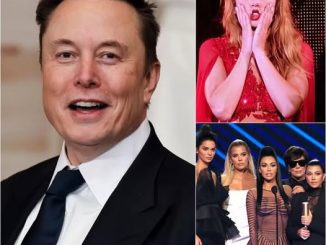
Elon Musk’s Gigafactories aren’t just massive industrial complexes—they’re a revolution in manufacturing. With these high-tech production hubs, Tesla isn’t just changing how electric vehicles (EVs) and batteries are made; it’s redefining global manufacturing itself.
These Gigafactories are built for speed, efficiency, and sustainability, embodying Musk’s vertical integration strategy—where almost everything is produced in-house, cutting costs and accelerating innovation. As more factories pop up around the world, Musk’s vision of high-speed, eco-friendly manufacturing is setting the gold standard. Let’s dive into how Gigafactories are shaping the future.
From Concept to Reality: The Birth of the Gigafactory
The idea for the first Gigafactory came from Tesla’s need to scale battery production. Back in 2016, Tesla was limited by battery supply, and Musk saw a bottleneck that threatened his EV empire. His solution? Build the world’s largest battery factory and bring production in-house.
The first Gigafactory, Gigafactory 1 in Nevada, was a bold experiment. It aimed to mass-produce lithium-ion batteries, cutting costs and boosting production for Tesla’s growing EV lineup. The facility was powered by solar and wind energy, aligning with Musk’s mission for sustainability. By 2018, it had become the highest-volume battery producer in the world.
But Musk wasn’t done. He scaled the concept globally, proving that this model wasn’t just a one-time success—it was the future of Tesla’s business.
The Global Gigafactory Network: Speed and Scale
Tesla’s rapid expansion of Gigafactories has stunned the auto industry. These mega-plants now span multiple continents, each playing a critical role in Tesla’s production strategy:
🚗 Gigafactory Shanghai (China) – Built in under a year, this plant now exports Teslas worldwide and serves as Tesla’s production hub for Asia. It’s a testament to Musk’s ability to move faster than traditional automakers.
🚀 Gigafactory Berlin (Germany) – Europe’s EV hub, this facility is set to make Tesla’s Model Y the dominant EV in the region. The German factory was designed with cutting-edge automation and AI-driven production.
🔋 Gigafactory Texas (USA) – The birthplace of the Cybertruck, this factory represents Tesla’s push for next-gen vehicles. Located near Austin, it’s one of Tesla’s most advanced factories yet.
⚡ Gigafactory Nevada & New York – These plants focus on battery and solar production, supporting Tesla’s clean energy mission.
Each Gigafactory has a specific role, but together, they form a global production powerhouse that’s reshaping the industry.
Vertical Integration: Tesla’s Manufacturing Superpower
Musk’s vertical integration strategy is what makes Gigafactories so powerful. Unlike traditional automakers, who rely on hundreds of suppliers, Tesla builds most of its components in-house.
🔧 Batteries? Made in Tesla’s factories.
🔩 Car parts? Mostly in-house.
🖥️ Software? Fully controlled by Tesla.
This approach allows Tesla to reduce costs, improve quality control, and scale production faster than competitors like Ford and Volkswagen. It’s a modern twist on Henry Ford’s assembly line, but fueled by AI, automation, and robotics.
Automation, AI, and the Future of Manufacturing
Gigafactories are not just massive—they’re smart. Musk has invested heavily in robotics and AI to make production more efficient.
🤖 Autonomous robots zip around factories, moving parts at lightning speed.
🧠 AI-powered quality control ensures every Tesla meets exact standards.
🔄 Continuous improvements allow factories to optimize production in real time.
Musk’s ultimate vision? A fully automated, AI-driven factory that produces cars at an unprecedented scale and speed.
The Competition: Legacy Automakers Play Catch-Up
Tesla’s success with Gigafactories has forced the entire auto industry to rethink manufacturing. Now, legacy automakers like Ford, Volkswagen, and General Motors are rushing to build their own high-tech factories.
📢 Volkswagen announced its own battery Gigafactories, inspired by Tesla.
🔋 General Motors and Ford are ramping up their EV production plants.
But Tesla still holds a major advantage—it’s been building and refining Gigafactories for years, while competitors are still figuring out their strategy.
The Future: Will Gigafactories Dominate the World?
Elon Musk envisions a future where Gigafactories are the backbone of global production, not just for Tesla, but for all industries.
🏭 Beyond EVs: What if Gigafactories produced AI chips, spacecraft, or even homes? Musk has hinted at applying this model to other industries.
🌍 Sustainable, decentralized production: Gigafactories reduce emissions by producing locally, cutting the need for long-distance shipping.
🚀 Scaling to Mars: Musk has even suggested that Gigafactories could one day be built on Mars to support a self-sustaining colony.
With each new factory, Tesla is not just making cars—it’s proving that the future of manufacturing is fast, automated, and green.
Conclusion: Musk’s Factory Empire is Just Getting Started
Elon Musk’s Gigafactories have revolutionized EV production, setting a new standard for global manufacturing. These mega-plants are efficient, high-tech, and sustainable, making Tesla one of the most powerful industrial forces in the world.
As competitors race to copy the model, the question is: Will Tesla’s Gigafactories dominate the future of manufacturing? If Musk’s track record is any indication, the answer is a resounding yes.


